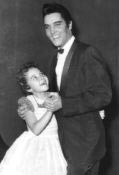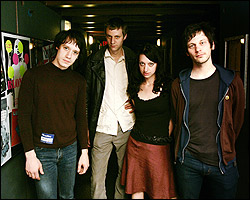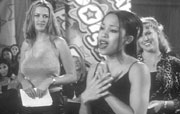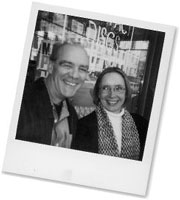WELCOME TO THE CLUB— THE WOMEN OF ROCKABILLY
local PBS stations 12:05 a.m. Sun., March 31
I’VE ALWAYS HATED conversations about women in rock. I’ve always held that if you can play, you should just shut up and play. I get frustrated with “grrrls” who use their feminism—real or faux—as an excuse for the possibility of failure. But my frustration is a luxury, and so are their excuses. There was a time when women truly had no place in rock—they could sure as hell could shut up, but they weren’t supposed to play.
Not until women like Wanda Jackson, Brenda Lee, Janis Martin, and Lorrie Collins came along. Then, they played. They belted out blues-flavored country-rock songs, and despite the fact that their style and sass flew in the face of a postwar conservative America, they won—for a brief time, at least—the hearts of radio listeners, record labels, and tastemakers across the country. The strength of documentary filmmaker Beth Harrington’s Welcome to the Club is that it never succumbs to pandering to the insecurities of female rockers. While the women she profiles—the previously listed legendary four—faced undeniable odds, the focus of the film is not necessarily that these rock ‘n’ rollers overcame those odds, it’s that they rocked ‘n’ rolled like it was nobody’s business.
“They’re not angry, but there is a level of frustration,” says Harrington, a former member of the art-school punks Modern Lovers. “Most of them are very gracious, but, for example, I was talking with Lorrie Collins [of the preteen sensations the Collins Kids, who toured with Johnny Cash and eventually spawned the hit “Delta Dawn”] about Britney Spears. This look came over her face. . . . It was just the wrong time for her. Here’s a woman who was beautiful, talented, she had lots going for her, but the pressure of being a teenager. . . . How much control did they have over their lives anyway?
“There’s definitely part of this that I had hoped would at least get that discussion going; not to put it all at the feet of a patriarchal culture, but as women, what are we buying? And back then, what were they buying? Records by cute boys? Fabian? He stunk!” says Harrington.
Harrington, like her subjects, speaks with simple truth and without pity. The tint of frustration is visible; the sadness of knowing that they paved the way but only walked it for a short time is present. And as each story unfolds, it’s clear that these women were caught inside America’s preconceived notions of their gender. One by one, as they married or became mothers, their careers were truncated by the expectations of being a woman in the ’50s. Not coincidentally, all of the women in the film have attempted to resurrect their careers in recent years. Wanda Jackson, as one example, recently rocked the pompadours and Betty Page haircuts at the Tractor. But the career misfires and eventual rebirths of these women are simply one element of the story.
Rosanne Cash narrates, and cultural anthropologist Mary Bufwack and writer Robert Oermann weigh in with the history of country music and the evolution of the genre into rockabilly and then rock ‘n’ roll. Through amazing archived live footage, Welcome to the Club demonstrates the overwhelming talent of these women and skips the preformulated, shoved-down-your-throat argument altogether. Just don’t be surprised when it gets you talking.








